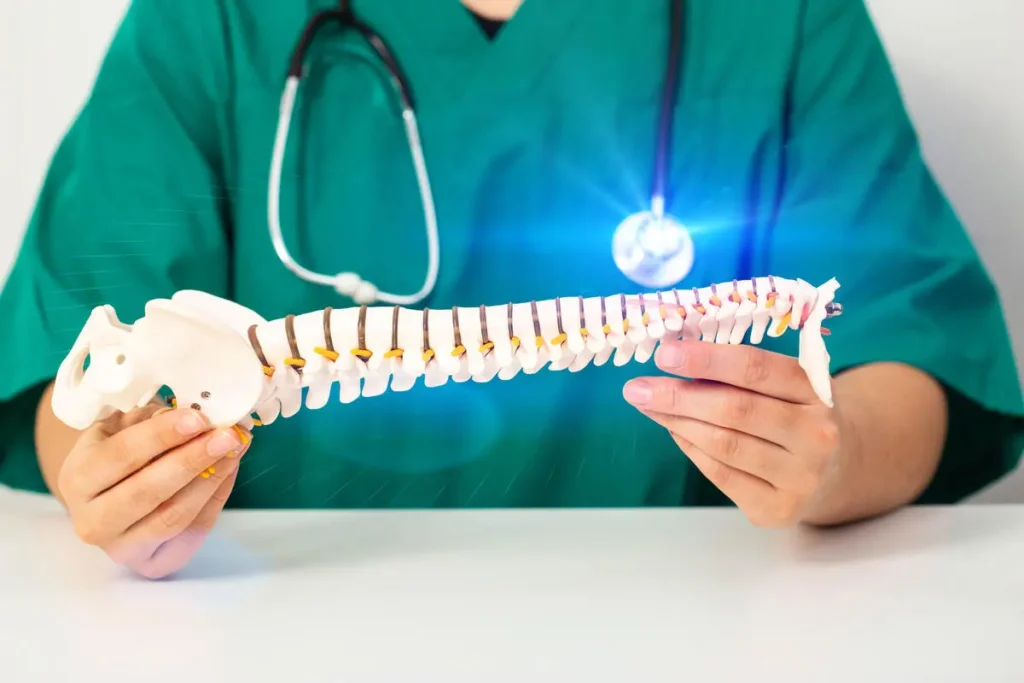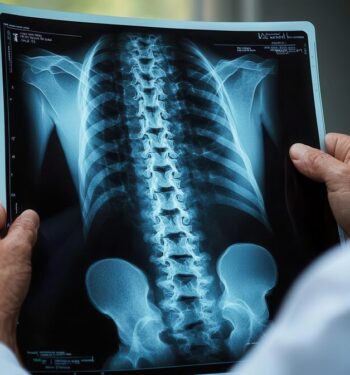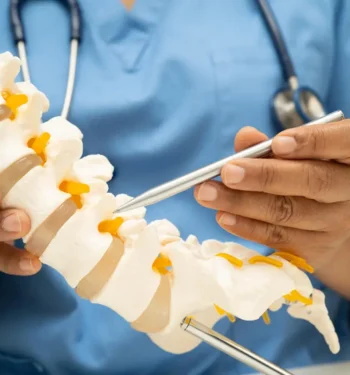
Understanding Severe Spinal Stenosis
Severe spinal stenosis is a critical narrowing of the spaces within your spine, which places significant pressure on the spinal cord and nerves. This condition is much more than everyday aches and pains — it can profoundly affect mobility, sensation, and overall quality of life, especially if not addressed promptly. Recognizing its signs and understanding the risk factors empower patients and families to seek attention and regain hope for the future.
What Is Considered Severe Spinal Stenosis?
Severe spinal stenosis is defined by extensive narrowing of the spinal canal, usually identified on imaging tests such as MRI or CT scans. This narrowing goes beyond mild or moderate forms, often causing marked compression of the spinal cord or nerve roots. People with severe spinal stenosis may experience intense pain, numbness, muscle weakness, difficulty with balance, or even loss of bladder and bowel control. Such symptoms can make daily activities increasingly difficult and may even threaten independence if not addressed.
Those diagnosed with severe spinal stenosis should not lose hope—advances in diagnosis and treatment make a return to activity and well-being possible. An early and accurate diagnosis is essential. If you or a loved one notices symptoms such as progressive weakness, significant numbness, or sudden changes in bladder or bowel habits, ask your doctor about Goodman Campbell to help determine the best path forward.
What Are the Worst Symptoms of Spinal Stenosis?
The worst symptoms of severe spinal stenosis often involve more than just chronic pain. These can include shooting pain radiating down the arms or legs, profound numbness, burning sensations, severe muscle weakness, and increasing difficulty walking or maintaining balance.
In rare cases, severe stenosis can lead to partial paralysis or loss of bodily control, which constitutes a medical emergency. Experiencing these symptoms can be frightening, but know that support and advanced treatments are available, and you are not alone on this journey.
Common Causes and Risk Factors
Severe spinal stenosis is frequently caused by age-related changes such as osteoarthritis, leading to bone overgrowth, herniated discs, thickened ligaments, or even spinal injuries. Genetics, an active history of heavy lifting, or existing health conditions, including spondylolisthesis or rheumatoid arthritis, can also play a role. Older adults are at the highest risk, yet the condition can affect younger individuals with certain spinal issues. Understanding your risk helps with early intervention, so always share new or worsening symptoms with your physician.
Who Is Most at Risk for Developing Severe Spinal Stenosis?
Adults over the age of 50 are particularly vulnerable, especially if they have a family history of spinal problems or lifestyle factors that strain the back. Additionally, people with jobs involving repetitive movement, or those diagnosed with conditions like scoliosis or previous spinal trauma, are at higher risk. Early engagement with a specialist can make all the difference. If you feel your quality of life is slipping due to spinal issues, ask your doctor about Goodman Campbell for expert evaluation and a personalized care plan designed just for you.
Can You Live a Long Life With Stenosis?
Can you live a long life with stenosis? For most people, a diagnosis of severe spinal stenosis does not mean they will have a shortened life expectancy. While it can mean challenges related to mobility and pain, taking a proactive approach to care, addressing symptoms early, and following expert guidance can help you maintain both quality of life and independence for many years to come. Spinal stenosis alone is rarely life-threatening, and many patients find relief and renewed energy after treatment, bringing hope and opportunity back into their lives.
How Long Can You Live With Spinal Stenosis?
Most individuals diagnosed with spinal stenosis can expect to live a normal or near-normal lifespan, provided they seek appropriate care and manage their symptoms. In very rare situations where the spinal cord or nerves are severely compressed for extended periods and left untreated, complications can arise; however, this is not the case for the vast majority of people. Advanced treatments, rehabilitation, and lifestyle adjustments make a significant difference, allowing patients to control pain, regain function, and live life on their own terms. Remember, early intervention is key—always consult with your spine care team about your symptoms and options.
Can Spinal Stenosis Kill You?
It is reassuring to know that spinal stenosis itself is not considered a fatal condition for most people. However, in extremely rare cases, if spinal stenosis leads to complications such as severe cauda equina syndrome or rapid paralysis and is left untreated, it could impact overall health and well-being by affecting bladder and bowel control or reducing mobility. Managing comorbid conditions such as diabetes, arthritis, and high blood pressure can also help limit inflammation and slow spinal degeneration. Timely diagnosis and proper management prevent such outcomes and ensure ongoing safety for patients.
Spinal Stenosis Death Rate: What Does the Data Show?
The death rate associated directly with spinal stenosis is exceedingly low. Spinal stenosis typically affects quality of life, not quantity. Modern medical advances, from targeted physical therapy to an array of surgical and nonsurgical interventions, mean the condition can almost always be kept under control. For individuals who diligently follow their care plans, including making healthy changes and exploring current treatment options, the future remains bright and filled with possibilities.
The Importance of Early Diagnosis and Treatment
Your journey to a longer, happier life with spinal stenosis starts by seeking skilled, compassionate medical guidance. Catching the condition early means more treatment options and a better chance for maximum recovery and comfort. Whether you are newly diagnosed or have been managing symptoms for years, regular check-ins and updated treatment plans help you remain empowered and active.
When to Seek Expert Advice — Ask Your Doctor About Goodman Campbell
If you notice new or worsening symptoms, increased pain, weakness, or any sudden changes in mobility or sensation, do not hesitate. Reach out to a spine specialist as soon as possible. Heeding these signs and acting quickly can make a transformative difference. For those who want to achieve the best possible outcomes, ask your doctor about Goodman Campbell or request an appointment. Our dedicated team of skilled physicians specializing in neurological care has helped countless people reclaim their lives, and we can help you, too.
Recognizing the Worst Symptoms and Final Stages of Spinal Stenosis
Facing severe spinal stenosis can be overwhelming, yet gaining awareness of its most intense symptoms and understanding how the condition progresses can be empowering. The worst symptoms of spinal stenosis can significantly impact day-to-day life, but recognizing these signs early allows you to seek expert care and take steps to protect your health and mobility. The final stages of spinal stenosis often involve more pronounced, urgent complications, making prompt intervention essential for preserving quality of life.
What Are the Worst Symptoms of Spinal Stenosis?
The most troubling symptoms of spinal stenosis are persistent, sometimes severe pain in the back, neck, or legs, which may worsen with activity and improve when sitting or leaning forward. Numbness, tingling, and muscle weakness in the arms or legs can make walking, gripping objects, or performing daily tasks a challenge. As the stenosis advances, these symptoms typically become more constant, and mobility can decline further, sometimes leading to frequent falls or difficulty standing.
Another concerning sign is shooting pain that radiates down the legs or arms, often described as “electric” or “burning.” Some patients experience balance problems or problems controlling their feet, resulting in a shuffling walk. If you notice increased pain, growing numbness, or trouble with coordination, it is vital to seek advice. Request an appointment at Goodman Campbell and discover how a comprehensive care team of true spine specialists can help you regain comfort and confidence.
What Are the Final Stages of Spinal Stenosis?
The final stages of spinal stenosis are marked by more severe and often disabling complications. These may include progressive weakness that makes it difficult to move the legs or arms, loss of sensation in the groin area, and, in the most serious cases, loss of bladder or bowel control. Such symptoms are signs of nerve compression that require immediate medical attention.
Without treatment, these symptoms can escalate to partial or even total paralysis. Although this progression can sound frightening, it’s important to remember that with early diagnosis and expert support from centers like Goodman Campbell, many people can stabilize their symptoms and even regain lost functions. If you or a loved one experiences sudden changes in strength, sensation, or control over bodily functions, do not wait. Schedule an appointment with Goodman Campbell for prompt, advanced care.
When Is Urgent Intervention Needed?
If you experience loss of bladder or bowel function, sudden or severe leg weakness, or numbness in the inner thighs or buttocks, you may be facing a complication called cauda equina syndrome, which needs emergency evaluation. Even if symptoms feel manageable, ongoing pain, numbness, or difficulty walking are all reasons to connect with a spinal care specialist sooner rather than later. Early action can prevent irreversible nerve damage and open the door to new possibilities for healing and comfort. Remember: You are not on this journey alone. Reach out for expert guidance, and ask your doctor about Goodman Campbell to get the support and answers that can put you on a path forward.
Finding Relief: The Best Pain Management and Newest Treatments for Spinal Stenosis
If you or a loved one is struggling with the discomfort of severe spinal stenosis, you can find hope in the many pain management and treatment strategies available today. Relief is possible, whether your symptoms are mild or you face challenges with everyday activities. By working closely with a compassionate medical team, you can embrace life again and reclaim your health.
What Is the Best Pain Management Approach for Spinal Stenosis?
The best pain management for spinal stenosis depends on your level of discomfort, your overall health, and potential side effects. For many, over-the-counter options can provide temporary relief for mild symptoms. As pain intensifies, prescription medications may be considered under careful medical supervision. Interventional pain management physicians can also administer corticosteroid injections around affected nerves can help to calm inflammation and give longer-lasting relief. And newer technologies such as spinal cord stimulator implants can provide relief from chronic pain. Each treatment plan should be tailored to you, so ask your doctor about Goodman Campbell to ensure your pain is addressed with expertise and compassion.
What Is the Newest Treatment for Spinal Stenosis?
Exciting advancements in minimally invasive and innovative treatments are bringing new hope to those with spinal stenosis. Technologies such as refined decompression surgeries now allow for quicker recovery and less post-procedure discomfort. These cutting-edge options can dramatically improve nerve function and reduce pain, even for those with longstanding symptoms. At Goodman Campbell, our specialists are at the forefront of these breakthrough treatments, offering procedures such as minimally invasive decompression and advanced nerve blocks that target pain at its source.
Lifestyle Modifications and Non-Pharmacological Strategies
Beyond medications and interventions, effective pain management includes gentle activity, physical therapy, heat and cold therapies, and ergonomic adjustments at home or work. Stress reduction, weight management, and staying as active as possible can also empower your healing journey. By nurturing your mind and body, you create a strong foundation for medical therapies to work their best. Feel empowered to explore all available treatment options and ask for support every step of the way.
Why Discuss Innovative Treatments With Goodman Campbell?
Your journey to relief should be built on trust, transparency, and empowerment. The team at Goodman Campbell is dedicated not only to reducing your spinal stenosis pain but also to restoring your hope and confidence in the future. Our compassionate approach, combined with advanced technology, means you will never have to walk this road alone. If you are curious about what’s possible, request an appointment at Goodman Campbell and let us help you find relief.
Daily Living: Staying Active, Sitting Comfortably, and Exercising With Spinal Stenosis
Staying active and comfortable in your daily life with severe spinal stenosis is not just possible—it’s essential for your well-being. With practical strategies for home, movement, and ergonomics, you can rise above discomfort and reclaim everyday joys. By making intentional choices in how you sit, move, and exercise, you protect your spine and empower yourself for a more fulfilling, active future. If you’re unsure where to begin or need additional support, don’t hesitate to ask your doctor about Goodman Campbell for guidance tailored to your needs.
How to Sit Comfortably With Spinal Stenosis?
Comfortable seating is one of the most impactful changes you can make at home or work. For those with spinal stenosis, sitting with your back straight, feet flat on the floor, and knees slightly higher than your hips can help minimize pressure on your spine. Consider ergonomic chairs with lumbar support to help maintain your spine’s natural curve. Placing a small pillow or rolled towel behind your lower back can also give much-needed support. Adjust your chair and desk so you aren’t leaning forward, and use a footrest if your chair is too tall. Remember, taking frequent standing and stretching breaks can prevent stiffness and pain from prolonged sitting.
What Is the Single Best Exercise for Spinal Stenosis?
Exercise is a beacon of hope and progress for people with spinal stenosis. While it is not the single best exercise for everyone with spinal stenosis, walking is often a top choice, as it keeps you mobile without excessive strain. Walking engages your core, hips, and legs, supporting both strength and flexibility. Water-based exercises, such as swimming or water aerobics, provide resistance and buoyancy, ideal for reducing stress on the spine. Gentle stretching and guided physical therapy routines can also help ease pain and improve mobility. No matter where you’re starting from, even short walks around your home make a tangible difference. Ask your doctor, a Goodman Campbell spine specialist, or physical therapist to design an exercise plan that’s right for you.
How to Relieve Pain From Spinal Stenosis?
Relieving pain from spinal stenosis starts with a proactive approach to your daily habits and self-care. Alternating ice and heat packs may ease sore muscles and tightness. Mindful movement, such as gentle stretching, yoga, or tai chi, can enhance flexibility and reduce discomfort. Maintaining a healthy weight and staying active also alleviate pressure on your spine. If pain persists, medical treatments — physical therapy, medications, or minimally invasive procedures — offer further support. Personalized care from experts like those at Goodman Campbell ensures you never have to manage pain alone. Take the next step. Request an appointment at Goodman Campbell to get personalized pain relief strategies for managing your spinal stenosis.
Tips for Creating a Spine-Friendly Home and Workspace
Your environment plays a crucial role in your comfort. Elevate your daily routine with simple changes: Place needed items within easy reach, use supportive cushions, and keep rooms free from tripping hazards. Ergonomic desks and adjustable monitors can help, as can standing workstations. These thoughtful adjustments empower you to live confidently and independently.
How Regular Movement Helps Long-Term Prognosis
Movement is more than medicine — it’s a path back to passion and purpose. Regular activity improves circulation, maintains joint function, and encourages your body’s natural healing. Staying active, even in small ways, can profoundly impact your long-term outlook with spinal stenosis. If you ever feel uncertain or face setbacks, remember that a specialized team — like at Goodman Campbell — is ready to help you overcome every hurdle and thrive.
Let hope guide your journey. For personalized support, targeted exercises, and ergonomic strategies that fit your lifestyle, ask your doctor about Goodman Campbell today.
Conclusion: Managing Severe Spinal Stenosis for a Healthy, Fulfilling Life
Severe spinal stenosis may feel overwhelming, but it is absolutely possible to continue living a vibrant and meaningful life with the right care, support, and proactive mindset. By understanding your condition, working closely with experienced healthcare professionals, and following a carefully tailored care plan, you can manage symptoms, preserve mobility, and maintain the activities you love. Hope and resilience are powerful companions in this journey. Many individuals with even severe cases have regained independence and joy through innovative treatments and consistent support.
Living well with spinal stenosis is easier when you embrace self-advocacy and stay actively involved in your care. Develop a personalized approach that includes regular checkups, symptom monitoring, a focus on healthy movement, and strategies to manage pain. Ask questions, set realistic goals, and celebrate every progress milestone, no matter how small. Remember, your well-being is a team effort. Expert care providers, family, and friends can all play vital roles in supporting your journey.
How to Maintain a Normal Lifestyle With Spinal Stenosis
Maintaining a normal lifestyle with spinal stenosis requires adaptability, self-care, and trusted medical guidance. Many patients find success by modifying daily routines — adapting their home and work spaces, choosing low-impact exercise routines, focusing on nutrition, and using ergonomic tools designed to reduce strain. Leaning on educational resources and patient support networks can reduce isolation and empower you with practical tips and inspiring stories.
Above all, surround yourself with optimism: real-life success stories show that individuals with severe spinal stenosis can return to hobbies, careers, and family activities, reclaiming joy and purpose. Engaging with specialized providers who offer cutting-edge treatments — including cutting-edge minimally invasive surgery and innovative pain management — can make a world of difference. Your journey is unique, but you are never alone.
With guidance from a dedicated team, perseverance, and hope, you can overcome the challenges of severe spinal stenosis and embrace a life filled with meaning and satisfaction. Take the next step with confidence! Request your appointment at Goodman Campbell today. Regain your movement, rediscover your passions, and start your inspiring path to wellness today.


